We use cookies to make your experience better. To comply with the new e-Privacy directive, we need to ask for your consent to set the cookies. Learn more.
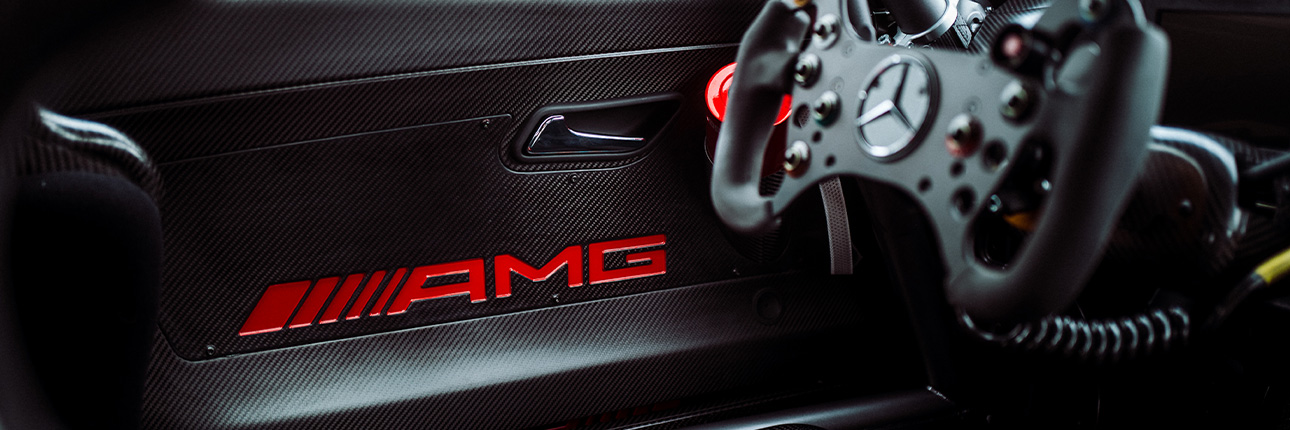
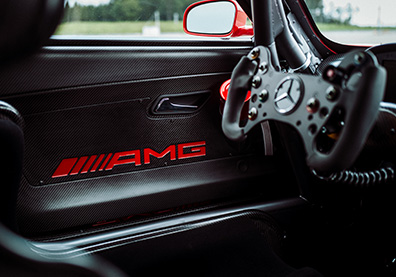
What does AMG stand for? The history of AMG
Over 50 years ago, an overwhelming passion for motorsports paved the way for an iconic brand: AMG.
"Two men with a passion for motorsport and engineering founded AMG. Hans Werner Aufrecht and Erhard Melcher saw an opportunity on every wide open road, an invitation in every curve, an affirmation in every victory: for more performance and more power. Today, this passion is infused into the very DNA of every Mercedes-AMG. Just like its numerous successes on racetracks around the world."
What does AMG stand for?
A: Aufrecht, after Hans Werner Aufrecht
M: Melcher, after Erhard Melcher
G: Großaspach, after the location AMG was founded
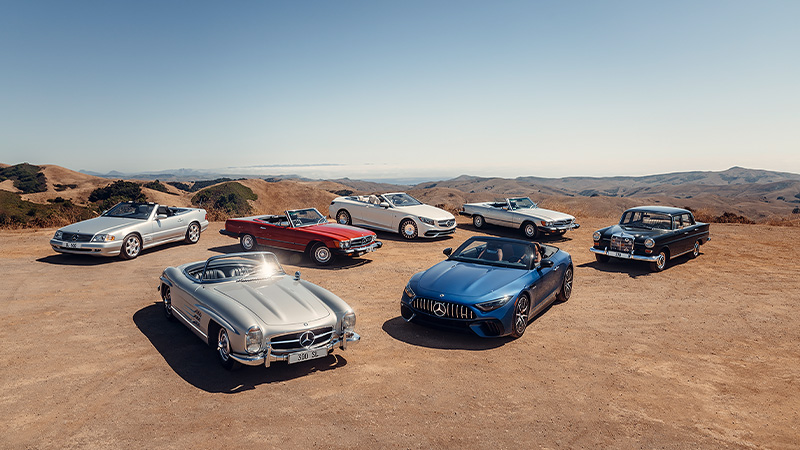
© Mercedes-Benz Group. Mercedes-Benz at the Pebble Beach Automotive Week: Mercedes-AMG GT world premiere and historic highlights. Mercedes-Benz Heritage presents the sport and super sport models from its collection.
Where did it all begin?
In the 1960s, engineers Hans Werner Aufrecht and Erhard Melcher were working on the 300 SE racing engine in the Development Department at Daimler-Benz, until the company discontinued its motorsport activities. Driven by their passion for motorsports, Aufrecht and Melcher spent their spare time honing the performance of the engine in Aufrecht’s Großaspach home.
In 1965, Daimler colleague Manfred Shiek attended the German Touring Car championship (Deutsche Tourenwagen Masters) with the developed 300 SE engine, and won 10 times. His triumph marked the beginning of Aufrecht and Melcher’s reputation as experts in optimising the performance of Mercedes-Benz vehicles.
Incorporating racing engineering into road vehicles
Aufrecht had a vision to offer road vehicles modelled after their successful racing car. In 1966, he left Mercedes-Benz and persuaded Melcher to venture into a shared business. A year later, they founded Aufrecht Melcher Großaspach Ingenieurbüro, Konstruktion und Versuch zur Entwicklung von Rennmotoren (Aufrecht Melcher Großaspach engineering firm, design and testing for the development of racing engines). Their headquarters were in a former mill, where almost immediately the engines they revamped became high in demand for private racing teams.
In 1971 during the 24 Hours of Spa, the AMG Mercedes 300 SEL 6.8 was the champion in its class. The name AMG quickly spread across the globe.
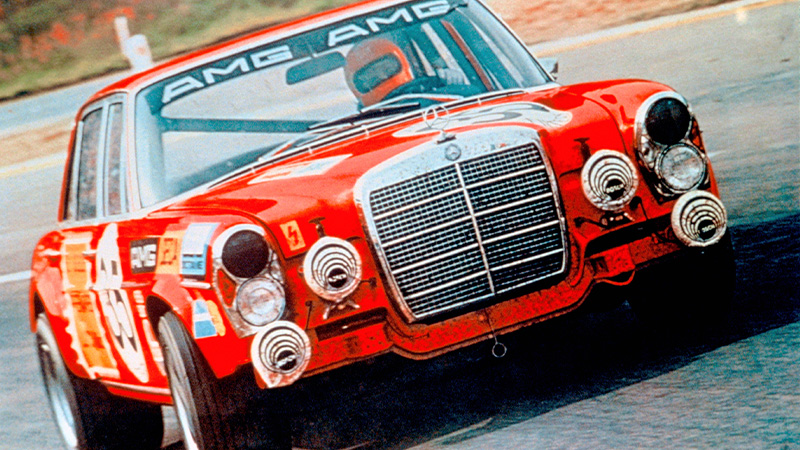
© Mercedes-Benz Group. AMG 300 SEL 6.8 racing touring car based on the Mercedes-Benz 300 SEL 6.3 (W 109) luxury saloon. At the 24-hour race in Spa-Francorchamps in 1971, Hans Heyer and Clemens Schickentanz attained second place overall, causing a sensation.
Evolution of AMG
Throughout the 1970s, AMG equipped more and more Mercedes-Benz models with its performance technology. Its popularity grew when the discipline of customisation was introduced. ‘Impossible’ became a foreign word for the Mercedes-AMG team. This element of the business allowed AMG to grow to a medium-sized company with a growing international client base. In 1976, Mercedes-AMG moved to a purpose-built workshop and office space in Affalterbach.
1984 saw AMG become an official manufacturer after Melcher developed a completely independent cylinder head with four valves per cylinder. Two years later in 1986, AMG implanted the 5.0-litre V8 in an E-Class Coupé, which shot to worldwide fame under the nickname ‘The Hammer’. In the late 1980s, Daimler-Benz and AMG began working together as official racing partners.
Joining the family
The year 1990 saw the cooperation contract concluded with Daimler-Benz AG, representing a milestone in AMG’s history. Demand increased now that AMG products could be sold and maintained through Mercedes-Benz’s worldwide network of dealerships and service outlets.
In 1993, the company unveiled the Mercedes-Benz C 36 AMG, which was the first joint-developed vehicles to follow the cooperation agreements. In another development in the same year, the Patent Office recognised AMG as a trademark.
On January 1st 1999, Aufrecht transferred a majority stake in the steadily-growing company to DaimlerChrysler AG. Six years later in 2005, DaimlerChrysler acquired 100% of the shares, allowing the newly founded Mercedes-AMG to benefit to an even greater extent thanks to the Group’s resources and global standing.
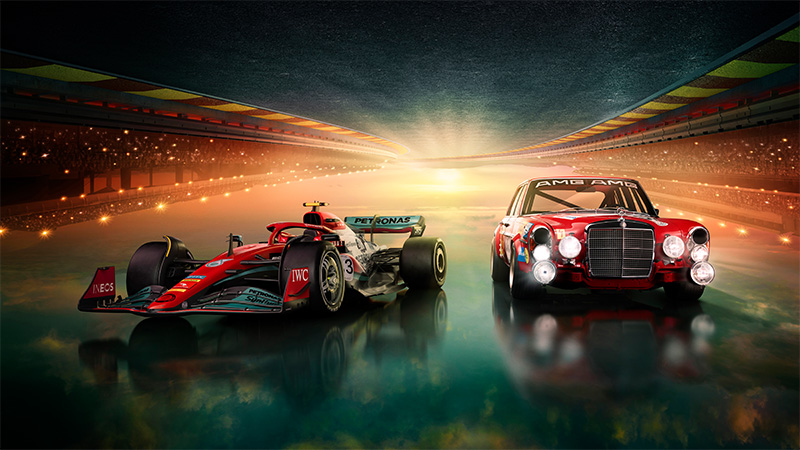
© Mercedes-Benz Group. The Mercedes-AMG PETRONAS F1 Team celebrates 55 years of AMG.
AMG today
The legend and professionalism of Mercedes-AMG is defined by its pursuit of high performance, precision, and efficiency. Every Mercedes-AMG performance car is dedicated to providing outstanding performance, an exhilarating driving experience, and exclusive quality.
With its roots seating firmly in motorsport, Mercedes-AMG has been at home on the race track for decades, from its position as the most successful brand in the history of the DTM through to its commitment to customer motorsport at the highest level with the SLS AMG GT3.
The Mercedes-AMG brand is also represented in Formula 1 by the Mercedes-AMG Petronas Motorsport team and the engine manufacturer Mercedes-AMG High Performance Powertrains. AMG has also been providing both the Formula 1 Safety Car and the Formula 1 Medical Car since 1996.
